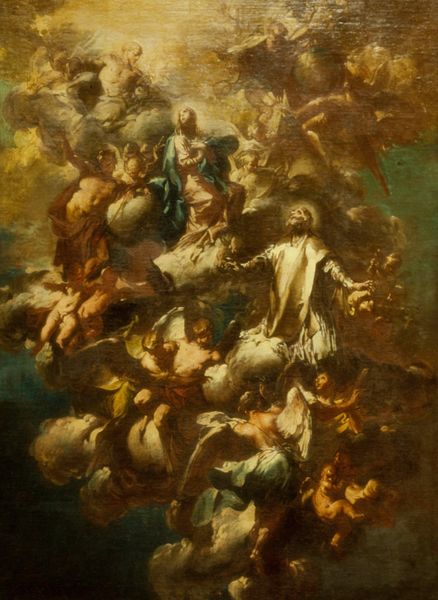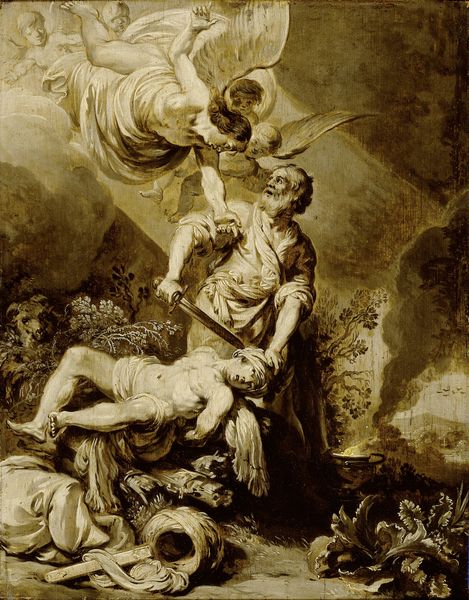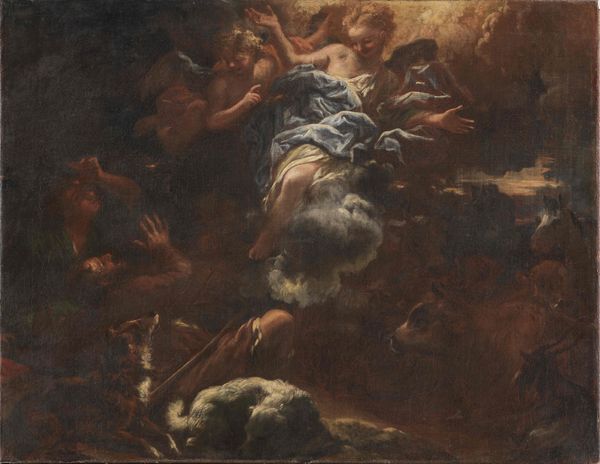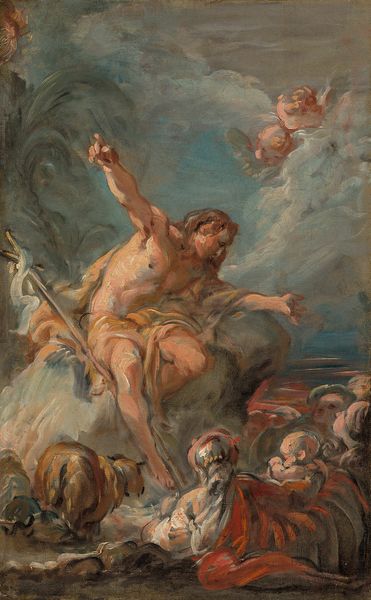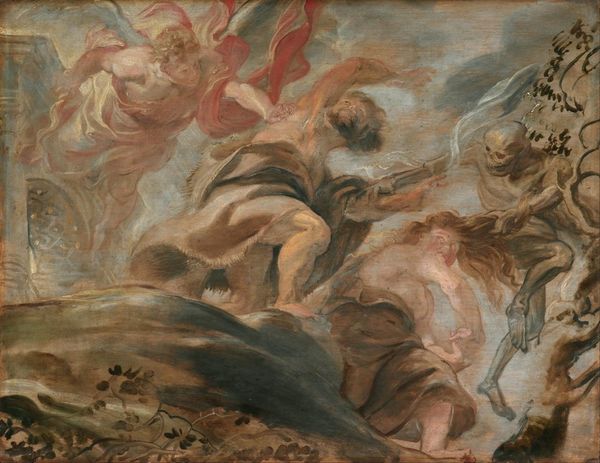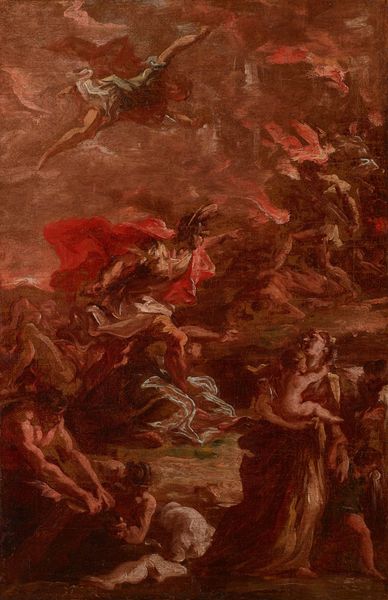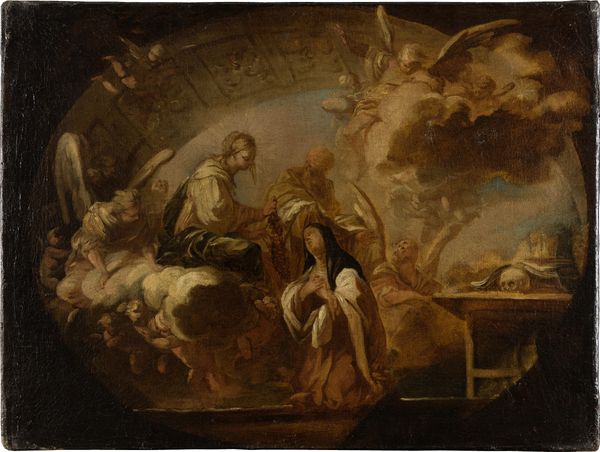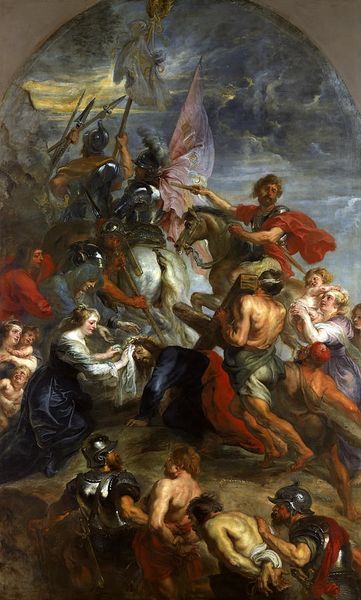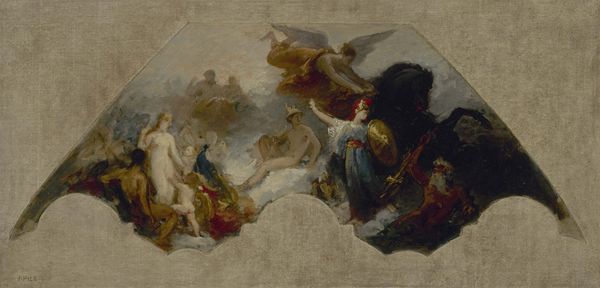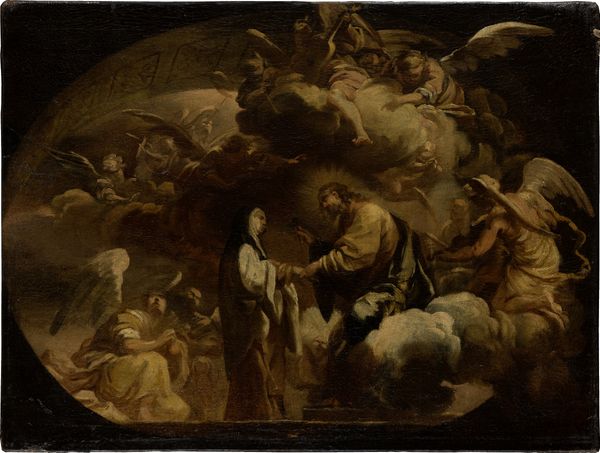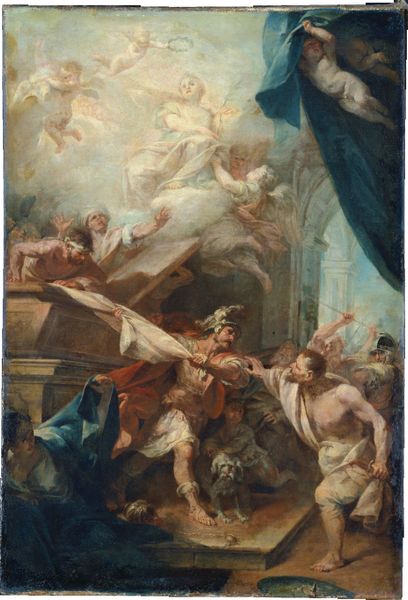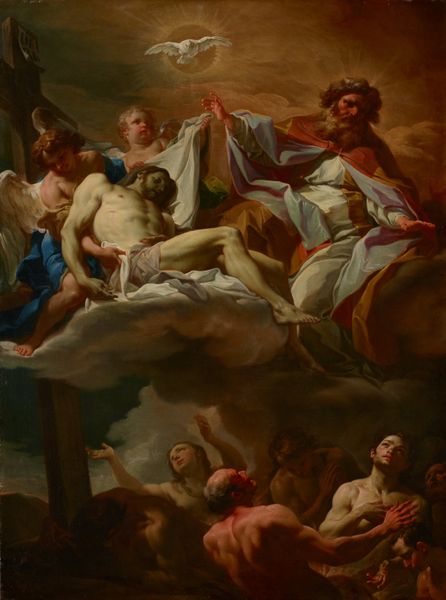
oil-paint
#
allegory
#
baroque
#
oil-paint
#
charcoal drawing
#
figuration
#
oil painting
#
history-painting
#
rococo
Dimensions: 19 1/4 x 11 3/8 in. (48.9 x 28.89 cm) (canvas)27 x 19 x 2 in. (68.58 x 48.26 x 5.08 cm) (outer frame)
Copyright: Public Domain
Jean-Baptiste Deshays made this sketch on canvas as a study for the “Assumption of the Virgin”. The quick strokes and visible underpainting reveal the artist’s process, typically hidden in a finished work. Oil paint allowed Deshays to build up layers of color, creating depth and luminosity. Consider the skilled labor involved in preparing the canvas, mixing pigments, and applying the paint with precision. While we see the artist's hand, so too we see that of workshop assistants, canvas makers and color grinders - a whole world of making. The very act of sketching implies a moment of creative exploration. The artist is working through ideas, experimenting with composition and light. It is interesting to consider how even the most seemingly ethereal subject matter, like a religious vision, is grounded in the material reality of artistic production. This preliminary work makes it possible to consider the labor and the context required to manifest these ideas in physical form. By appreciating the materials, making, and context of "Study for the Assumption of the Virgin," we can gain a deeper understanding of the full meaning of this artwork.
Comments
minneapolisinstituteofart almost 2 years ago
⋮
In this lively oil sketch, the Virgin Mary ascends into heaven from her tomb, carried by a swirl of angels. Jean-Baptiste Deshays made this work in preparation for a major altarpiece in 1758, on his return to Paris after a four-year stay in Rome. Deshays had recently married the eldest daughter of the important Parisian painter François Boucher (1703–70), who influenced him tremendously at the time. When Mia acquired the sketch, it was attributed to Boucher, because of similarities to three known oil sketches by him. Further research identified it as the work of Deshays. Clearly, Deshays drew inspiration from his father-in-law when working out ideas for the altarpiece. But this study also reveals his preference for bolder color combinations and less emotive figures than Boucher employed.
Join the conversation
Join millions of artists and users on Artera today and experience the ultimate creative platform.
